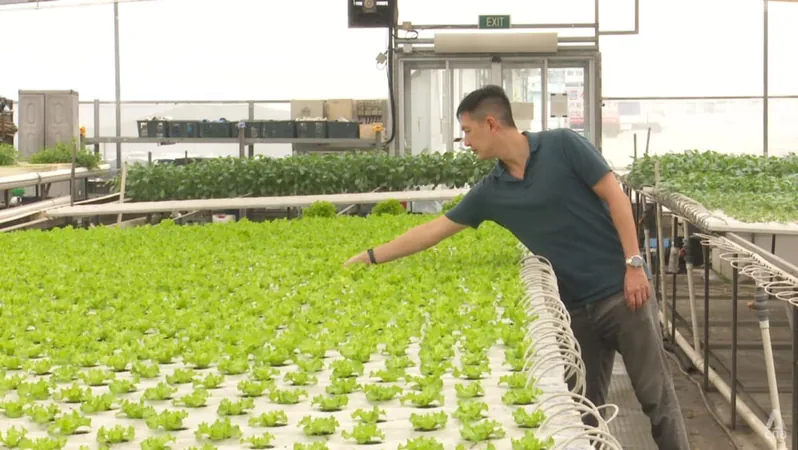
Avian Flu Outbreak: H5N1 Virus Now Affects Dairy Cows Across Multiple States – What You Need to Know
2024-09-16
The recent outbreak of the H5N1 avian flu strain has taken a worrying turn, now infecting dairy cows in over a dozen U.S. states and severely impacting agriculture and public health. This strain, which has caused the culling of millions of domestic birds, has raised alarms as it has sickened farmworkers, particularly in states like Colorado.
To better understand this emerging situation, we consulted microbiologist Jenna Guthmiller from the University of Colorado Anschutz Medical Campus. Here's a closer look at H5N1, its transmission, and safety precautions you can take.
What is H5N1?
H5N1 is a highly pathogenic subtype of the influenza A virus, primarily affecting wild birds—especially waterfowl like ducks and geese. Unlike more commonly known subtypes, such as H1N1 and H3N2 that are responsible for seasonal human outbreaks, H5N1 has a history of severe spillovers to domestic poultry, leading to alarming mortality rates.
First identified during a poultry outbreak in Scotland in 1959, the virus gained notoriety during significant outbreaks in 1997, 2003-2005, and 2015, with human infections recorded since 2003 leading to nearly 900 confirmed cases, resulting in a high fatality rate.
The Current Situation
The latest H5N1 outbreak began around late 2021, traced back to mutations from earlier strains. Since its onset, the virus has spread globally, largely fueled by migratory birds. This spread has resulted in substantial culling within the poultry industry and, alarmingly, has recently jumped to mammals, including lactating dairy cows.
As of August 27, 2024, 192 herds across 13 states have tested positive for H5N1, signaling a troubling trend. Reports show that this virus quickly returned to wild bird populations after infecting dairy cows, complicating containment efforts.
How Is H5N1 Transmitted to Dairy Cattle?
Unlike typical influenza infections that primarily affect the respiratory tract, H5N1 significantly impacts the mammary glands of cows. Recent research indicates that the mammary tissue has specific receptors, making it susceptible to infection. The virus likely spreads through contaminated milking equipment, shared across farms or through the movement of infected animals.
In April 2024, the U.S. Department of Agriculture implemented testing for cattle transported across state lines, particularly in Colorado, which has seen the most infections. Regular testing is required to catch outbreaks early.
Risks for Humans and Other Animals
While H5N1 is not known to spread between people, those with direct exposure to infected animals, like farmworkers, remain at high risk. Symptoms for humans can resemble common colds, including congestion and fatigue, but also conjunctivitis—a condition commonly known as pink eye.
Domestic pets, especially barn cats fed raw milk from infected cows, have also been noted as vulnerable. Cases have been reported where these animals tested positive for H5N1, highlighting the interconnectedness of animal health and public safety.
Keeping Farmworkers Safe
Implementing stringent biosecurity measures is crucial. Farmworkers should use personal protective equipment (PPE), including gloves and goggles, and maintain distinct clothing and footwear when working on different farms. Awareness of H5N1 symptoms is essential for those at potential risk.
Should You Worry About Dairy Milk?
Fortunately, pasteurized milk poses no threat of H5N1 infection to humans, as pasteurization effectively eliminates the virus. However, it's crucial to avoid raw or unpasteurized milk, especially since high levels of the H5N1 virus have been detected in such products.
In conclusion, the spread of H5N1 poses significant challenges not only for agriculture but also for public health. Continued vigilance, research, and biosecurity measures will be paramount in controlling this evolving threat. Stay informed and keep your health in check as we navigate this ongoing situation.



 Brasil (PT)
Brasil (PT)
 Canada (EN)
Canada (EN)
 Chile (ES)
Chile (ES)
 España (ES)
España (ES)
 France (FR)
France (FR)
 Hong Kong (EN)
Hong Kong (EN)
 Italia (IT)
Italia (IT)
 日本 (JA)
日本 (JA)
 Magyarország (HU)
Magyarország (HU)
 Norge (NO)
Norge (NO)
 Polska (PL)
Polska (PL)
 Schweiz (DE)
Schweiz (DE)
 Singapore (EN)
Singapore (EN)
 Sverige (SV)
Sverige (SV)
 Suomi (FI)
Suomi (FI)
 Türkiye (TR)
Türkiye (TR)